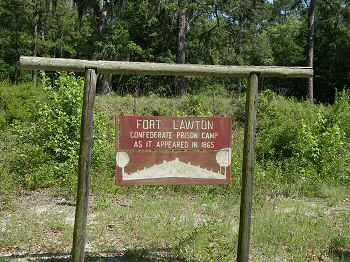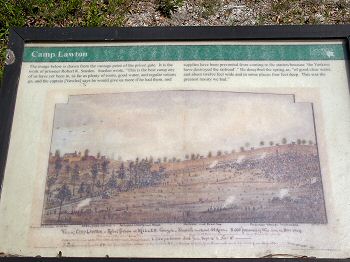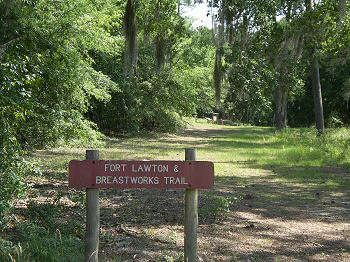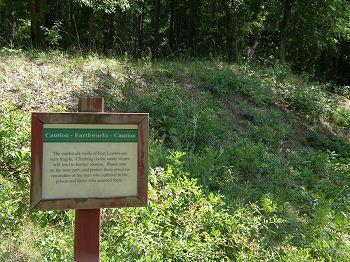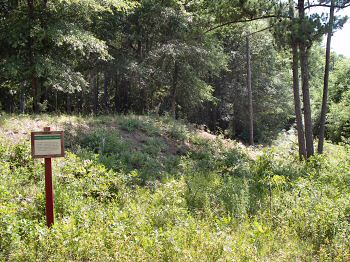|
Camp Lawton, a huge prisoner of war camp occupying 40 acres and designed
to hold 40,000 men, was built in September 1864 to relieve congestion at
Camp Sumter at Andersonville and to remove the possibility of Gen. W.T.
Sherman's army freeing prisoners there. Built by a force of 300 prisoners
and 500 slaves, the camp was a log stockade, with guard towers on the
walls, and a ditch dug
 within
the walls for a deadline. On high ground surrounding the prison, three
earthen forts were excavated and armed with cannon to prevent escape and
guard from attacks. One of the reasons the prison was located here was the
large, pure spring, which could supply ample water to the prisoners; and
the second reason involved the Augusta Railroad, located one mile from the
camp. If the camp was threatened, prisoners could be loaded on trains and
moved north to Augusta or south to Savannah, and to other points from
there. within
the walls for a deadline. On high ground surrounding the prison, three
earthen forts were excavated and armed with cannon to prevent escape and
guard from attacks. One of the reasons the prison was located here was the
large, pure spring, which could supply ample water to the prisoners; and
the second reason involved the Augusta Railroad, located one mile from the
camp. If the camp was threatened, prisoners could be loaded on trains and
moved north to Augusta or south to Savannah, and to other points from
there.
The first prisoners began arriving in
October 1864. By November, 10,299 were held here. On Nov. 25, 1864, the
camp was abandoned in advance of Sherman's "March to the Sea," and the
prisoners were first sent to other camps, including temporary ones in
Blackshear and Thomasville, Georgia, then back to Andersonville. The camp
was not much better than Andersonville, and more than 700 prisoners died
of disease, exposure, and malnutrition in the brief time it was open. When
the Left Wing entered the prison, they were enraged at the conditions they
found there, including a long, freshly filled pit with a board that read,
"650 Buried Here." The Left Wing burned the stockade. Today, the spring is
the site of Magnolia Springs Park. The earthworks remain and historical
markers outside and inside the park tell part of the story. The railroad
town of Millen had a beautiful depot and hotel which were burned when
Sherman's men came through on Dec. 3, 1864. The local Chamber of Commerce,
located in the new depot, built 1915, has a large picture of the prison,
various displays, and a historical tour guide to homes in the county. |
